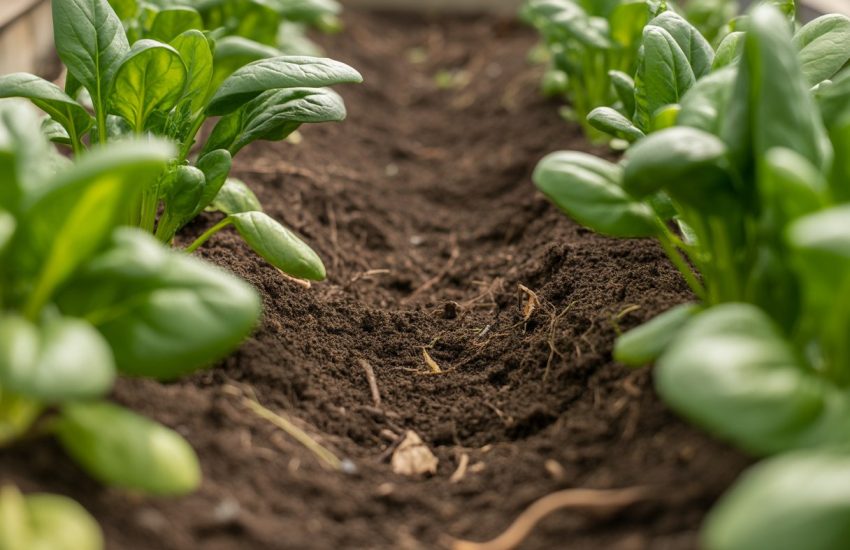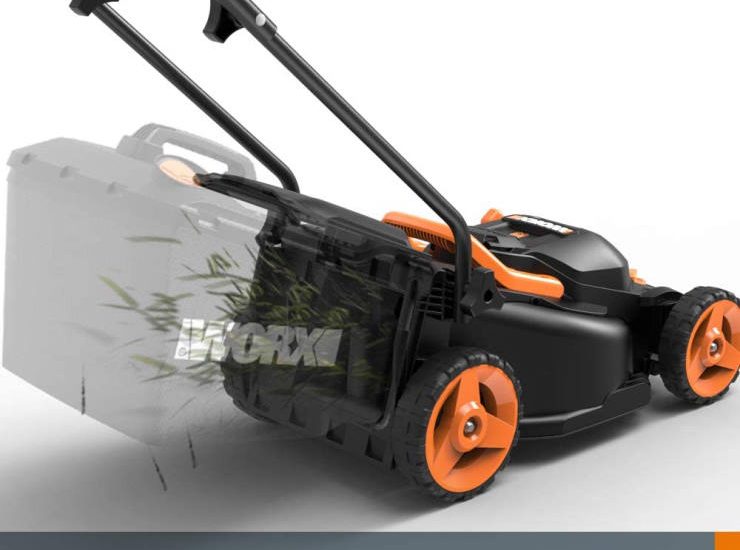How to Propagate Umbrella Plant: A Step-by-Step Guide
Umbrella plants, also known as Schefflera, are popular houseplants that are prized for their lush foliage and ease of care. One of the best ways to expand your collection of these beautiful plants is to propagate them. Propagation is the process of creating new plants from existing ones, and it’s a great way to get more bang for your buck.
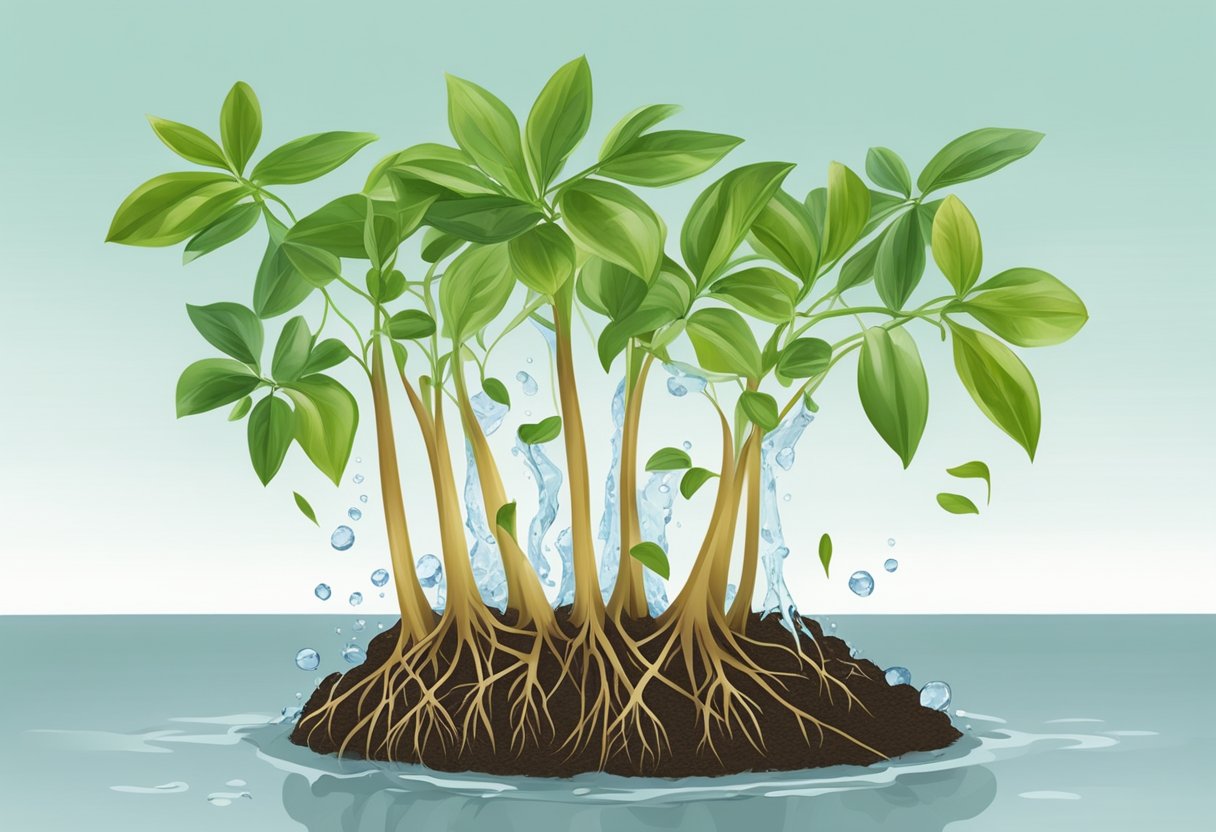
There are several ways to propagate umbrella plants, including stem cuttings, leaf cuttings, and air layering. Each method has its own advantages and disadvantages, and the best one for you will depend on your experience level and the resources you have available. In this article, we’ll go over the basics of how to propagate umbrella plants, so you can start growing your own beautiful specimens at home.
Understanding Umbrella Plant Propagation
Types of Umbrella Plants
Umbrella plants, also known as Schefflera arboricola and Schefflera actinophylla, are popular houseplants due to their attractive foliage and easy care. There are several types of umbrella plants, including dwarf, variegated, and green varieties. Each type has its own unique characteristics, but all can be propagated using similar methods.
Benefits of Propagation
Propagating umbrella plants is an excellent way to create new plants from existing ones. It’s also an effective way to rejuvenate an older plant that may have become leggy or overgrown. Additionally, propagating umbrella plants allows you to share your plant with friends and family, or even sell them if you have a green thumb and a knack for gardening.
Best Time for Propagation
The best time to propagate umbrella plants is in the spring or summer when the plant is actively growing. During this time, the plant is producing new growth, which makes it easier to take cuttings. It’s important to avoid propagating umbrella plants during the winter when the plant is dormant.
To propagate an umbrella plant, take a stem cutting that is approximately 4-6 inches long and has several leaves. Remove the lower leaves from the cutting, leaving only the top few leaves intact. Dip the cut end of the stem in rooting hormone and plant it in a pot filled with well-draining soil. Keep the soil moist and place the pot in a warm, bright location, but out of direct sunlight. In a few weeks, the cutting should begin to root and produce new growth.
In conclusion, propagating umbrella plants is a simple and rewarding process that can be done by any gardener. By understanding the different types of umbrella plants, the benefits of propagation, and the best time to propagate, you can successfully create new plants and share your love for gardening with others.
Preparation for Propagation
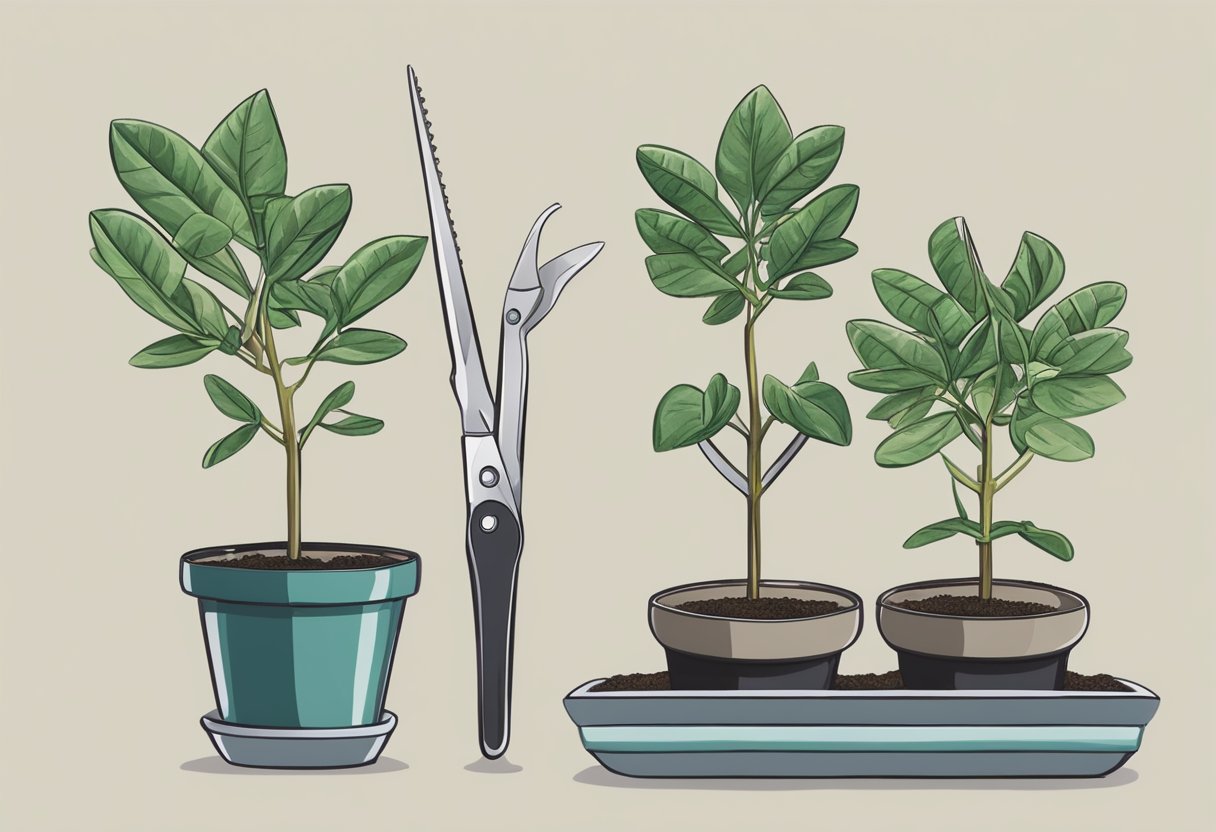
Selecting the Parent Plant
Before propagating an umbrella plant, it is important to select a healthy and mature parent plant. Look for a plant with strong stems and leaves, and avoid any plants with signs of disease or pests. It is also recommended to choose a parent plant that has not been recently fertilized, as this can lead to excessive growth and weaken the plant’s overall health.
Tools and Materials Needed
To propagate an umbrella plant, you will need a few basic tools and materials. These include a sharp pair of pruning shears, a clean pot with drainage holes, a well-draining potting mix, rooting hormone, sphagnum moss, and a plastic bag. It is also recommended to have isopropyl alcohol on hand to sterilize your tools and prevent the spread of disease.
Creating the Right Environment
To ensure successful propagation, it is important to create the right environment for your umbrella plant cuttings. This includes providing bright, indirect light and maintaining a consistent temperature between 70-80°F. A horticultural heat mat can be used to help maintain a stable temperature. Humidity levels should also be kept high, which can be achieved by covering the cuttings with a plastic bag or placing them in a humidity dome. It is important to monitor moisture levels and avoid overwatering, as this can lead to root rot. A well-draining potting mix with perlite or vermiculite can help ensure proper drainage.
Propagation Methods
Soil Propagation
Umbrella plants can be propagated through stem cuttings. The best time to take cuttings is during the growing season, which is usually in the spring or summer. Cut a stem that is at least 4 inches long, and remove the leaves from the lower half of the stem. Dip the cut end of the stem in rooting hormone, and plant it in a well-draining soil mix. Keep the soil moist, and cover the pot with plastic wrap to create a humid environment. After a few weeks, the cutting should start to grow roots.
Water Propagation
Another way to propagate umbrella plants is through water propagation. Cut a stem that is at least 4 inches long, and remove the leaves from the lower half of the stem. Place the stem in a jar of water, making sure that the bottom of the stem is submerged. Change the water every few days to prevent bacteria growth. After a few weeks, the cutting should start to grow roots.
Sphagnum Moss Propagation
Sphagnum moss propagation is a method that can be used for umbrella plants that are difficult to root. Cut a stem that is at least 4 inches long, and remove the leaves from the lower half of the stem. Dip the cut end of the stem in rooting hormone, and wrap it in a damp paper towel. Place the stem in a plastic bag with sphagnum moss, and seal the bag. Keep the bag in a warm, bright location, and check it every few weeks. After a few weeks, the cutting should start to grow roots.
Air Layering Method
The air layering method is a way to propagate umbrella plants without cutting the stem. Choose a healthy stem, and make a small cut in the bark. Apply rooting hormone to the cut area, and wrap it with damp sphagnum moss. Cover the moss with plastic wrap, and secure it with tape. After a few weeks, roots should start to form. Once the roots are well-developed, cut the stem below the roots and plant it in a well-draining soil mix.
Planting and Aftercare
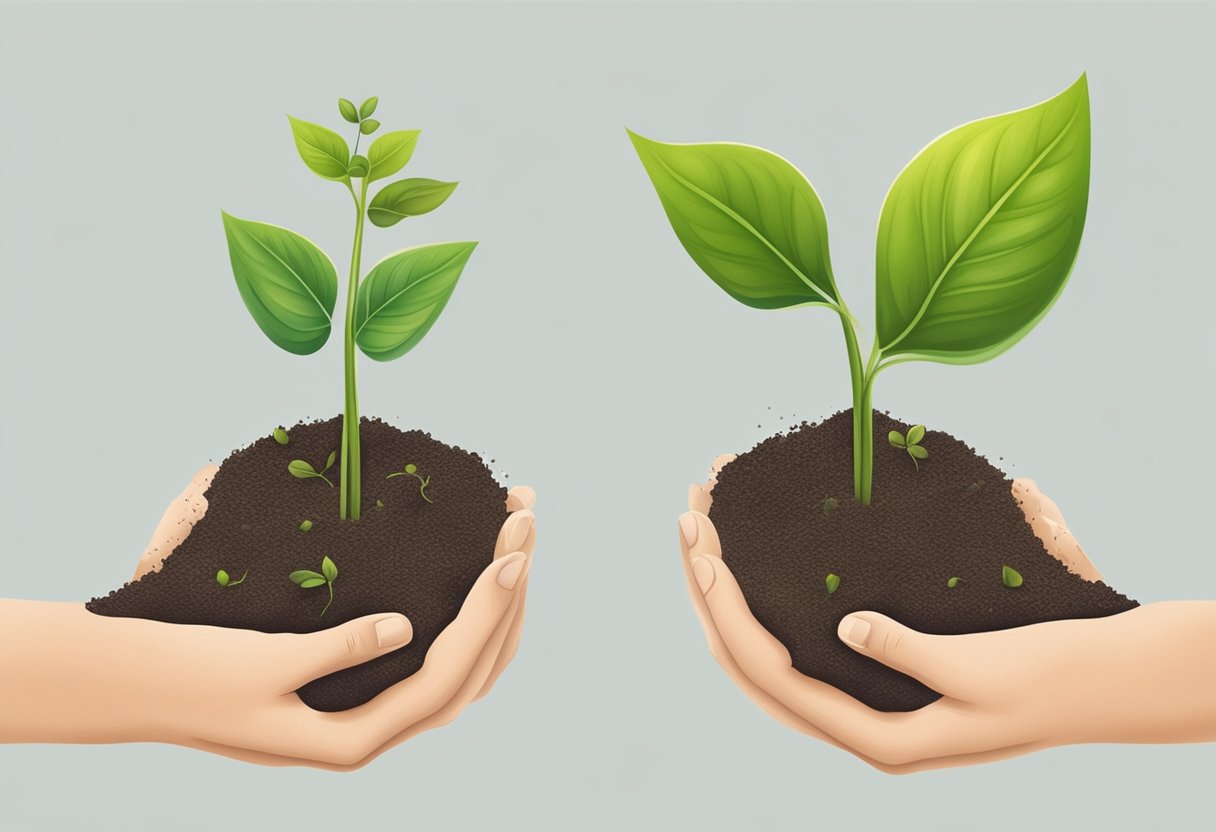
Potting the New Plant
When propagating an umbrella plant, it is important to choose a pot that is slightly larger than the root ball of the plant. Use a well-draining potting soil that is rich in nutrients and organic matter. Fill the pot with soil to a level that allows the plant to sit at the same depth as it was in the previous container. Gently place the plant in the center of the pot and fill the remaining space with soil. Press the soil lightly around the plant to ensure that it is secure.
Watering and Feeding
Water the newly potted umbrella plant until the soil is moist but not waterlogged. Allow the soil to dry out slightly between watering to prevent overwatering, which can lead to root rot and other diseases. Fertilize the plant once a month during the growing season with a balanced fertilizer to promote healthy growth.
Managing Light and Temperature
Umbrella plants prefer bright, indirect light and warm temperatures between 65-75°F (18-24°C). Avoid placing the plant in direct sunlight, as this can scorch the leaves. Keep the plant away from cold drafts and sudden temperature changes.
Monitoring for Growth and Health
Regularly check the plant for new growth and signs of disease or pests. Prune the plant as needed to maintain its shape and size. If the plant starts dropping leaves, it may be a sign of overwatering or other issues. Adjust watering and other care as needed to ensure that the plant remains healthy.
By following these simple tips for planting and aftercare, you can successfully propagate and care for your umbrella plant as a beautiful indoor houseplant.
Common Issues and Solutions
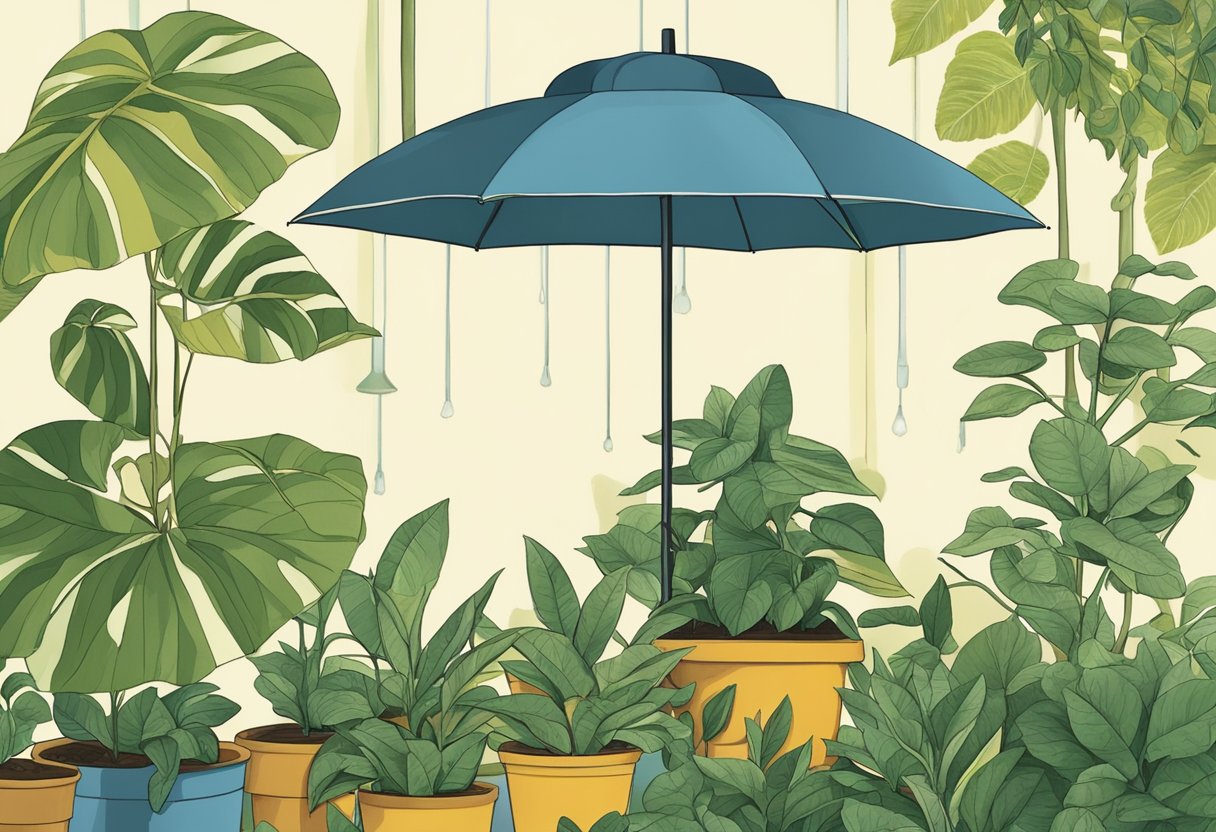
Dealing with Pests and Diseases
Umbrella plants are generally hardy and resistant to most pests and diseases. However, they can still be affected by common houseplant pests such as spider mites, mealybugs, and scale insects. These pests can cause yellowing leaves, stunted growth, and a general decline in plant health.
To deal with these pests, it is important to catch them early. Regularly inspect your umbrella plant for any signs of infestation, such as webbing, sticky residue, or small insects on the leaves and stems. If you do find pests, there are several organic options for control, such as neem oil, insecticidal soap, or a mixture of water and rubbing alcohol.
Diseases can also affect umbrella plants, such as root rot or leaf spot. These can be caused by overwatering, poor drainage, or high humidity levels. To prevent these diseases, make sure to allow the soil to dry out slightly between waterings, and avoid getting water on the leaves. If you do notice any signs of disease, remove affected leaves or stems and treat with a fungicide if necessary.
Troubleshooting Poor Growth
If your umbrella plant is not growing as well as it should be, there are several things to consider. First, make sure it is getting enough light. Umbrella plants prefer bright, indirect light, and may not grow well in low light conditions. Second, check the soil moisture level. Overwatering can cause root rot and poor growth, while underwatering can cause the leaves to droop and wilt.
If the plant is still not growing well, it may need to be fertilized. Use a balanced, water-soluble fertilizer every 2-3 weeks during the growing season. Be careful not to over-fertilize, as this can also cause poor growth and damage to the plant.
Preventing Common Mistakes
There are several common mistakes that can be made when caring for an umbrella plant. One of the most common is overwatering. Umbrella plants prefer slightly dry soil, and can be susceptible to root rot if the soil is too wet. Make sure to allow the soil to dry out slightly between waterings, and avoid getting water on the leaves.
Another mistake is trimming the plant too aggressively. While it is important to prune dead or damaged leaves, over-pruning can cause stress to the plant and slow down growth. Only prune as necessary to maintain the shape and health of the plant.
Finally, repotting too often or using the wrong type of soil can also cause problems. Umbrella plants prefer well-draining soil, and should only be repotted when the roots have outgrown the current container. Use a high-quality potting mix that is specifically formulated for houseplants.
By avoiding these common mistakes and following the tips outlined above, you can ensure that your umbrella plant stays healthy and thrives in your home.
Additional Tips for Success
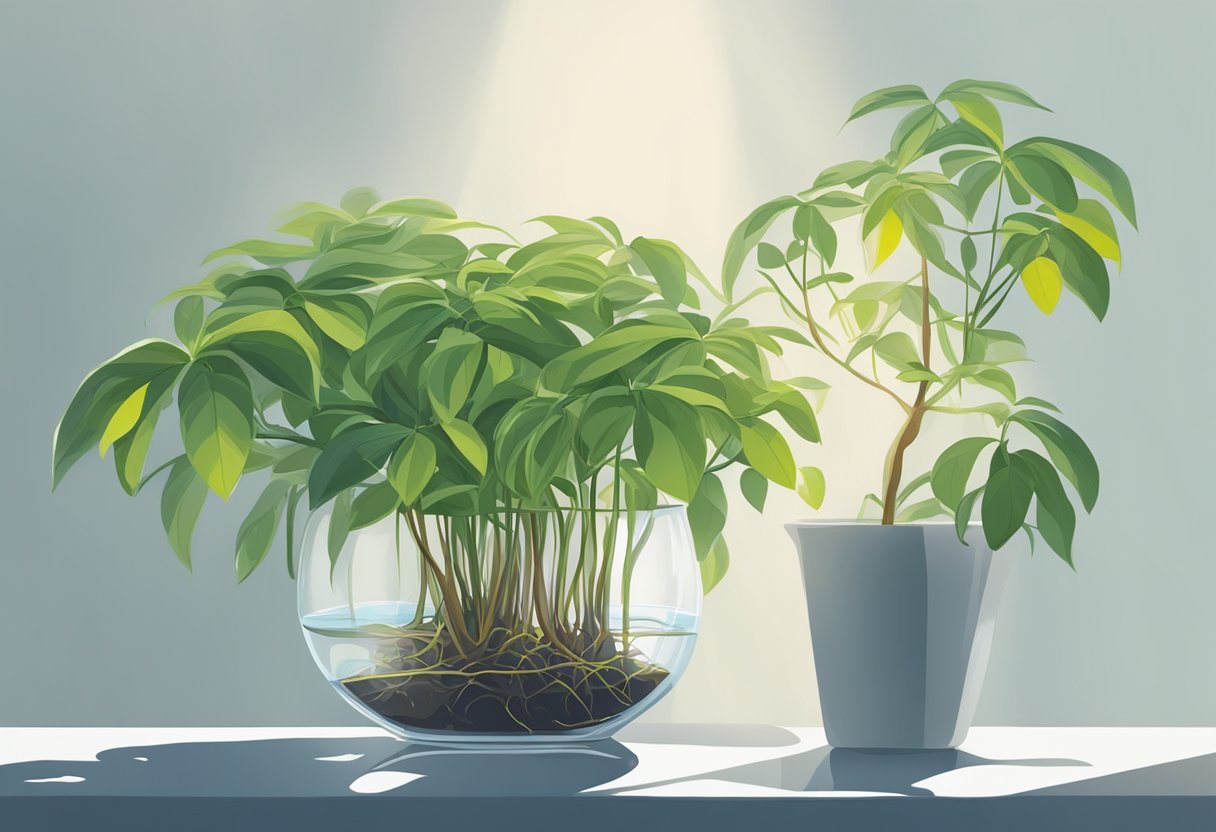
Choosing the Right Containers
When propagating umbrella plants, it is important to choose the right containers. The containers should be clean and have drainage holes to prevent waterlogging. Plastic pots are a good option as they retain moisture well. However, if you prefer a more aesthetic look, you can choose ceramic or clay pots. Make sure the size of the container is appropriate for the size of the cutting. A small cutting should be placed in a small container, and a larger cutting should be placed in a larger container.
Optimizing Humidity and Moisture
Humidity and moisture are important factors in propagating umbrella plants. The cuttings should be kept in a humid environment to prevent them from drying out. One way to achieve this is to cover the cuttings with a plastic bag or a clear plastic container. This will create a mini greenhouse and help to retain moisture. Another way to increase humidity is to mist the cuttings regularly. The potting mix should be kept moist, but not waterlogged. Overwatering can lead to root rot and other problems.
Using Growth Enhancers
To encourage root growth, you can use growth enhancers such as rooting hormone and fertilizer. Rooting hormone helps to stimulate root growth and can be applied to the base of the cutting before planting. Fertilizer provides the necessary nutrients for the plant to grow. However, it is important not to over-fertilize as this can damage the plant. Follow the instructions on the fertilizer package and use it sparingly.
By following these additional tips, you can increase your chances of success when propagating umbrella plants. Remember to keep the containers clean and appropriate in size, optimize humidity and moisture, and use growth enhancers wisely. With a little patience and care, you can grow healthy and beautiful umbrella plants from cuttings.
Frequently Asked Questions
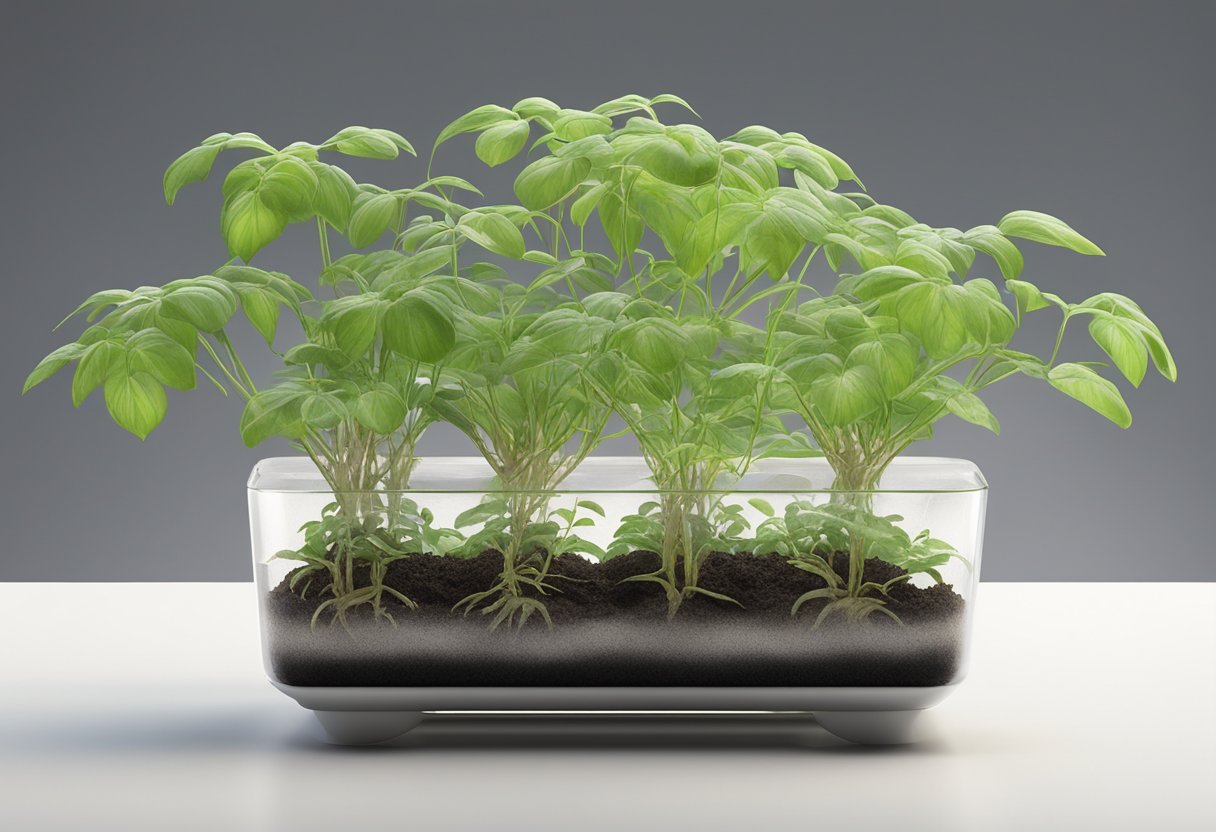
What is the best method to propagate an umbrella plant in water?
The best method to propagate an umbrella plant in water is to take a stem cutting of about 4-6 inches in length, remove the lower leaves, and place the cutting in a jar of water. Change the water every few days to keep it fresh and avoid bacterial growth. After a few weeks, roots should start to grow from the cut end of the stem, and once they are about an inch long, the cutting can be planted in soil.
How can you successfully propagate an umbrella plant in soil?
To propagate an umbrella plant in soil, take a stem cutting as described above and dip the cut end in rooting hormone powder. Then, plant the cutting in a pot filled with well-draining soil and keep it moist but not waterlogged. Place the pot in a warm, bright location but out of direct sunlight. Roots should start to grow within a few weeks, and once they are established, the plant can be moved to a larger pot or planted in the garden.
Can you grow a new umbrella plant from just a leaf cutting?
No, it is not possible to grow a new umbrella plant from just a leaf cutting. The plant needs a stem cutting with at least one node to be able to grow roots and develop into a new plant.
What is the proper technique for cutting an umbrella plant to encourage propagation?
To encourage propagation, take a stem cutting that is about 4-6 inches long and has at least one node. Use a clean, sharp pair of scissors or pruning shears to make a clean cut just below the node. Remove any lower leaves from the cutting, leaving only a few at the top. Dip the cut end in rooting hormone powder and follow the instructions for propagating in water or soil.
Is it possible to root Schefflera cuttings directly in water?
Yes, it is possible to root Schefflera cuttings directly in water. Follow the same steps as for propagating an umbrella plant in water, taking a stem cutting of about 4-6 inches in length and removing the lower leaves. Change the water every few days to keep it fresh and avoid bacterial growth. Once roots have developed, the cutting can be planted in soil.
How can you propagate an umbrella palm effectively?
To propagate an umbrella palm effectively, take a stem cutting as described above and follow the instructions for propagating in water or soil. Make sure to keep the cutting moist and in a warm, bright location but out of direct sunlight. Once roots have developed, the new plant can be moved to a larger pot or planted in the garden.

